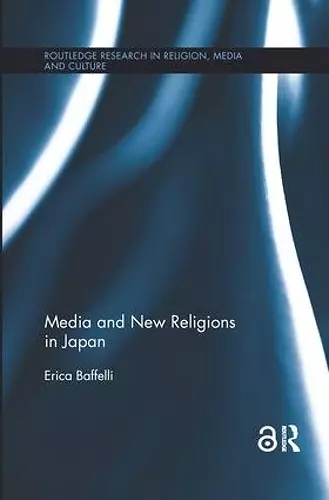Media and New Religions in Japan
Format:Paperback
Publisher:Taylor & Francis Ltd
Published:5th Feb '18
Currently unavailable, and unfortunately no date known when it will be back
This paperback is available in another edition too:
- Hardback£160.00(9780415659123)

The Open Access version of this book, available at www.taylorfrancis.com/books/9781135117849, has been made available under a Creative Commons Attribution-Non Commercial-No Derivative 4.0 license.
Japanese "new religions" (shinshūkyō) have used various media forms for training, communicating with members, presenting their messages, reinforcing or protecting the image of the leader, and, potentially, attracting converts. In this book the complex and dual relationship between media and new religions is investigated by looking at the tensions groups face between the need for visibility and the risks of facing attacks and criticism through media. Indeed media and new technologies have been extensively used by religious groups not only to spread their messages and to try to reach a wider audience, but also to promote themselves as a highly modern and up-to-date form of religion appropriate for a modern technological age. In 1980s and early 1990s some movements, such as Agonshū , Kōfuku no Kagaku, and Aum Shinrikyō came into prominence especially via the use of media (initially publications, but also ritual broadcasts, advertising campaigns, and public media events). This created new modes of ritual engagement and new ways of interactions between leaders and members. The aim of this book is to develop and illustrate particular key issues in the wider new religions and media nexus by using specific movements as examples. In particular, the analysis of the interaction between media and new religions will focus primarily on three case studies predominantly during the first period of development of the groups.
‘Erica Baffelli’s book breaks new ground by providing us with the first comprehensive analysis of the ways in which Japanese new religions use media forms to create marketable images of themselves and to construct images of their leaders and to transmit their teachings. Her study shows how the charismatic standing of leaders may be constructed and reinforced via media-ised processes, publications and rituals, and how new religions make use of spectacular, media-oriented rituals to attract new audiences. Yet she also shows that new religions at times have problems with new media, as her account of the ways in which they may struggle with the potentialities of the Internet, shows. As such this is a valuable study of importance to anyone interested in Japanese religions, new religions, and the media.’ -- Ian Reader, University of Manchester, UK
ISBN: 9781138548794
Dimensions: unknown
Weight: 453g
192 pages